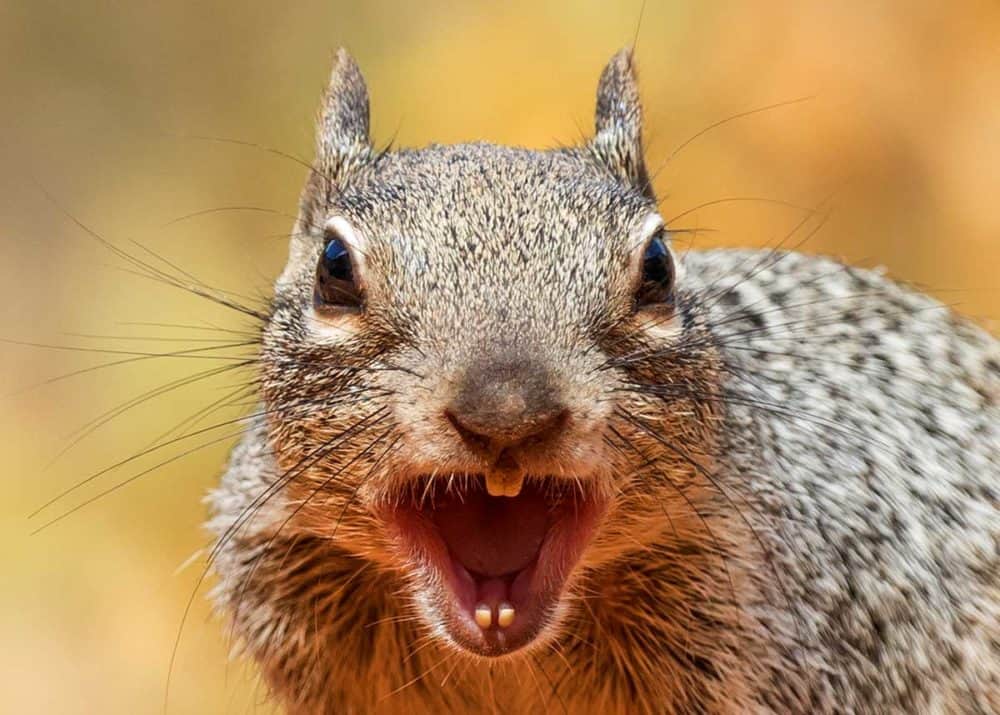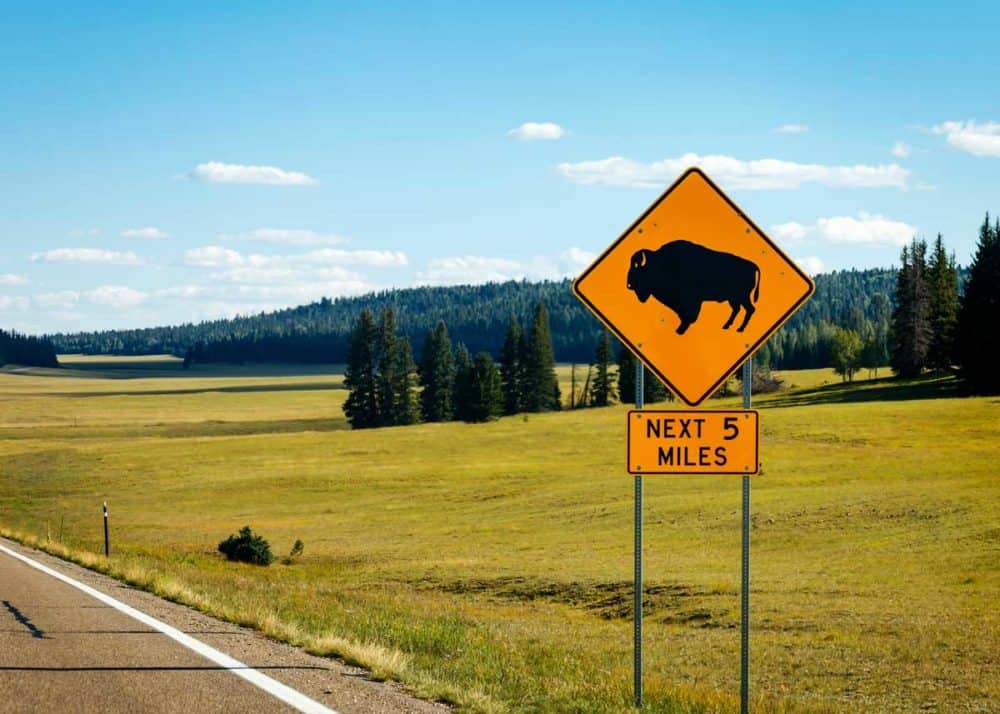8 Dangerous Animals in the Grand Canyon: Rock Squirrel Attack
While falling might seem like the biggest risk in the Grand Canyon, don’t overlook other risks. For example, dying from heat and dehydration is more common than falling deaths. And the wildlife poses risks to visitors.
The most dangerous animal in the Grand Canyon is the rock squirrel. They cause more injuries than any other animal. Other dangerous animals in the Grand Canyon include elk, bison, bark scorpions, rattlesnakes, and tarantula hawks.

One of the most iconic places in the United States for an RV vacation is the country’s awe-inspiring Grand Canyon National Park.
Before heading out to wild places like this, it’s a good idea to have a few precautions in mind, especially when encountering wildlife. One of the most commonly asked questions is what is the most dangerous animal in the Grand Canyon.
The Most Dangerous Animal in the Grand Canyon
Surprisingly, the cute rock squirrel causes more injuries than any other animal, according to the National Park Service.
There are several reasons this small mammal poses the biggest threat to visitors. But first, let’s learn more about these interesting creatures.

Rock Squirrel
As the name implies, rock squirrels live in rocky areas. This variety of ground squirrels dig burrows underground rather than making nests in trees. The climate and geography of the Grand Canyon make it the perfect place for these animals to thrive.
Rock squirrels are omnivores and have a varied diet but usually stick to plants. Insects and road kill are also eaten when available.
These creatures grow to be around 10 inches long (before considering the tail). They have thick bodies and are normally dark grey with some brownish coloration.
In this video by the National Park Service, they share some tips for dealing with rock squirrels. And examples of an injury from a rock squirrel attack.
Dangers Posed by Rock Squirrels
The risks of encountering a rock squirrel aren’t a result of the animal’s nature but rather a complication of these creatures living close to humans. Rock squirrels are diurnal, unlike many other animals in the park.
Since most people visit the park during the daytime, rock squirrles are one of the most common animals folks encounter.
Proximity isn’t the only factor. Since these squirrels look small and cute, people don’t feel threatened by them. Many rock squirrels have also lost their fear of humans, which is usually a result of the animals being fed by people. Some even steal food right out of people’s hands!
While searching for food, rock squirrels can become aggressive. They can bite or scratch.

Rock squirrels can also be carriers of diseases like tularemia and plague, though the risk is lower than other rodents since they live in smaller groups.
Although they may look cute and come right up to you, please remember that squirrels are wild animals—don’t feed them, and keep your distance—because they can bite! In addition, human food is hard for rock squirrels to digest, and feeding them has led to several squirrel fatalities. These squirrels have been known to get into backpacks, lunch pails, and trash cans, and to steal food right out of visitors’ hands.
NPS
As the NPS points out, physical injury isn’t the only risk of interacting with animals.
The cute squirrel selfie you want to take might bring you internet infamy. Several videos have gone viral for the wrong reasons. Animals act unpredictably and sometimes lash out. Phones are everywhere, and the results of poor behavior can last a lifetime.
Remember: Feeding wildlife in a national park is illegal. Calling, clicking, whistling, or making noises of any kind to attract wildlife is also illegal.
Here are some tourist interactions with rock squirrels.
Here is the pesty nature of rock squirrels – feeding and watering them has removed their natural apprehension of humans.
The following video was shot at Zion National Park.
Wildlife Safety in the Grand Canyon
The best way to protect yourself and the creatures in the Grand Canyon is to keep your distance.
Giving wildlife proper space ensures unwanted encounters don’t happen.
- Keep at least 50 feet of space between you and the creature for small animals like rock squirrels, birds, and reptiles.
- Allow for a 100-foot (30 m) distance when observing larger creatures, like deek, elk, and bison.
One school bus is about 50 feet. One hundred feet equals about two bus lengths.
Feeding wild animals is one of the worst things you can do for your safety and the animals. Not only does this make them more likely to approach humans and exhibit aggressive behavior, but the wrong food can also make them sick or even result in death.
Did you know that while most squirrels remain active all winter, ground squirrels hibernate in winter?
7 Other Dangerous Animals at the Grand Canyon
Though the rock squirrel causes the most problems at the park, they aren’t the only creature at the Grand Canyon that poses a threat. Be aware of your surroundings and keep your distance from these creatures that could cause you harm.
Here are seven more animals that pose varying levels of risk to humans.
1. Bark Scorpion
Bark Scorpions are the most venomous scorpions in North America. Since these animals are nocturnal, encounters with humans are rare. If you do see these creatures, do not handle them.
They are commonly found inside the Grand Canyon and also on the canyon Rims.
This rafter was stung by a bark scorpion and lost her ability to see or speak clearly.

2. Bison
Watching bison from the safety of your RV is probably the safest way to view these majestic creatures. Do not approach these powerful creatures. They are wild animals and can behave unpredictably, causing injury and damage.
There is a herd of 500 wild bison that lives in the park. While there are no recent accounts of bison attacks in the Grand Canyon, it is somewhat common in Yellowstone National Park.

3. Elk
While elk aren’t typically aggressive, they are one of the more dangerous animals in the park. They will defend themselves if you get too close. Like bison, these animals are large and can cause substantial injury due to their size.
Stay at least 100 feet (30 meters) away from elk.

4. Gila Monster
One of two venomous lizards in the world, the Gila Monster’s bite won’t kill you but will be very painful. Observe these reptiles from a distance.
5. Mountain Lion
Though mountain lions are the largest predator in the park, they usually avoid humans since they don’t see them as prey.
Take care when driving at night, as these nocturnal animals are commonly struck by vehicles.

6. Rattlesnakes
Five species of rattlesnakes live in Grand Canyon National Park. One species (Crotalus oreganus abyssus) is commonly known as the Grand Canyon rattlesnake.
Given proper space, these animals leave humans alone. However, if threatened, they may bite.
Less than 1% of rattlesnake bites end in death, but giving the snakes space and listening for their rattling tail as a warning can help keep you from getting bitten.

7. Tarantula Hawk
While Tarantula Hawks rarely sting unless provoked, these colorful wasps have ¼” long stingers.
Stings from the Tarantula Hawk are reported to be the second most painful of all insects.

Final Thoughts for the Road
So, what is the most dangerous animal in the Grand Canyon? Though not fierce creatures, rock squirrels end up causing more problems in the park than other animals.
Of course, dying from heat and dehydration is more common than falling deaths. But the risk from animals should not be overlooked.

Follow the safety precautions outlined by the park and skip the squirrel selfie. Like all other animals in the Grand Canyon, these squirrels should be enjoyed at a distance.







